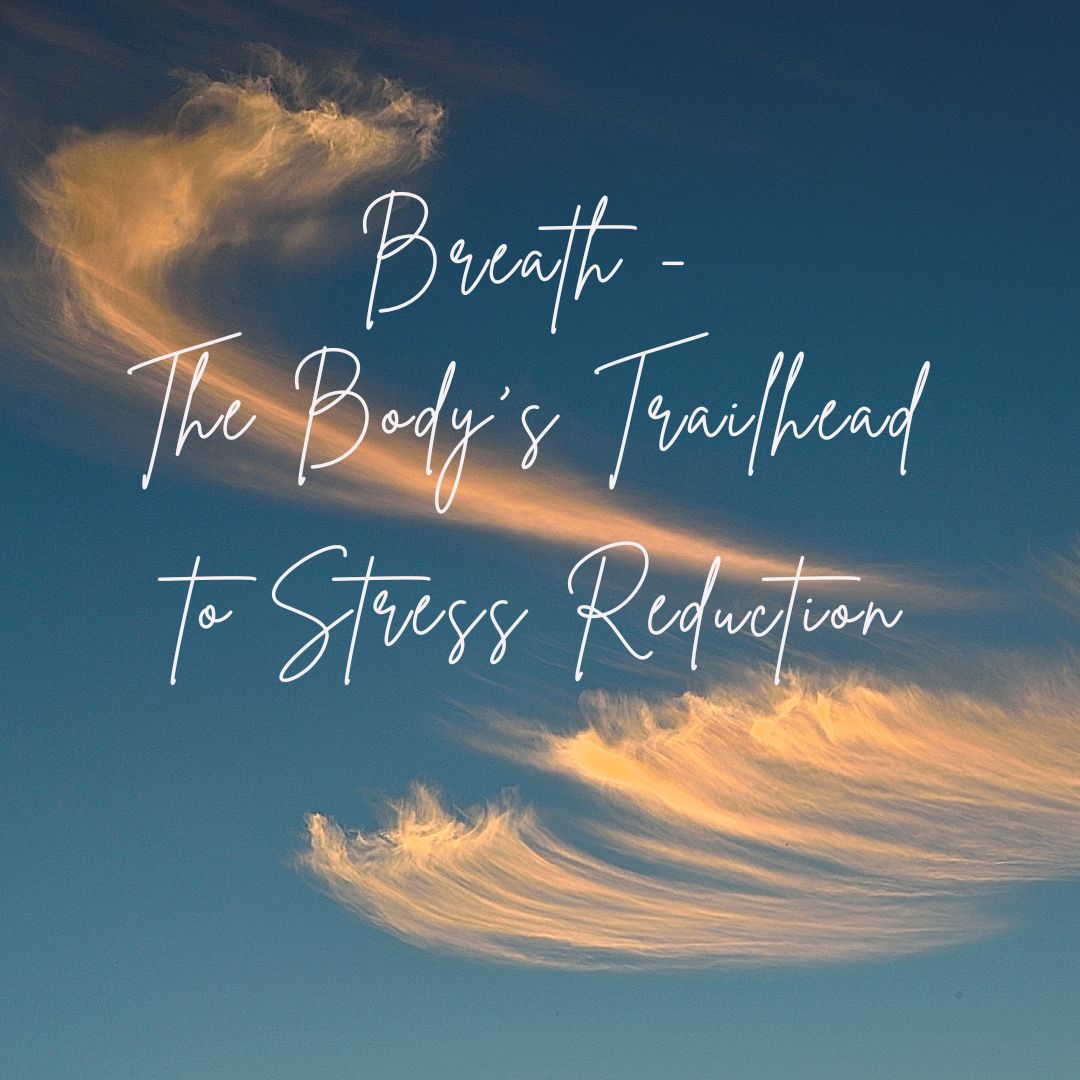Hey there, stress warriors!
Ready to embark on the next leg of our journey? In case you missed our previous chats, we’ve covered the spiritual and emotional angles of stress reduction. Now, let’s zero in on the third pillar – our body. This one’s for those of you who might be thinking, “I don’t have capacity to work on the spiritual or emotional lessons.” No worries! Our body is another trailhead through which we can start the journey, and it’s the entry point for anyone who wants to dial down stress without diving too deep into the sometimes more scary stuff. Sometimes it’s ok to tackle stress from the ground up rather than the head down – a bit like reverse engineering calm. If the emotional and spiritual waters seem too deep right now, the physical approach is your gentle trailhead.
Trust me, I’ve spent my fair share of years fine-tuning the physical side before venturing into the emotional deep dive. It’s not about choosing one pillar over the others; it’s about finding your sweet spot, your trailhead to abundant well-being, and watching it ripple through the rest. So, let’s kick this off by taking a deep dive into the art of mindful breathing.
This pillar is packed with goodies, and I’m here to guide you through it – even though I won’t be able to cover it all in one go. Just like we did with the spiritual and emotional pillars, I want to offer you a buffet of options to kickstart your journey towards a stress-free you.
So. Breathe. There’s a lot to unpack here. Focusing on your breath is like hitting the pause button, something we all desperately need in a world that’s constantly urging us to go faster and push harder. The modern pace of life has stress galore. But the simple act of slowing down through mindful breathing is a secret weapon against the chaos. So, let’s take a deep breath together and explore the miracle that happens when we embrace the art of slowing down.

Rushing through life, constantly racing against the clock isn’t just about deadlines – it’s also hitting the stress button in your body. Your heart racing, blood pressure soaring, and breath sprinting. Stress hormones like adrenaline, noradrenaline, and cortisol get the green light, releasing a surge of energy. This full-blown stress response also wreaks havoc on your digestive system, throwing a wrench into the absorption of the good stuff you manage to squeeze into your hectic schedule.
Your body, in all its wisdom, doesn’t get the memo that what you’re facing isn’t a life-or-death situation. Why? Because it’s wired to hit the fight or flight switch the moment stress pops up on your brain’s radar. Enter the autonomic nervous system (ANS), the puppet master pulling the strings on your body’s reactions, it is faster than your conscious thoughts. When the sympathetic branch of the ANS takes the stage, it’s all about fight or flight mode. Heart pounding, stress hormones partying. But, there is another branch – the parasympathetic branch, your body’s chill mode, the rest, and digest state. This is when your body kicks back, relaxes, and gears up for optimal digestion.
The same brain region that cranks up the stress dial also hits pause on digestion. It’s like a switch – stress on, digestion off; relaxation on, digestion on full throttle. So, when we talk about good nutrition, it’s not just about eating the ‘right’ things (we’ll get to that); it’s also about creating the ideal inner ambiance for your body to absorb and make the most of that nutritious goodness. It’s the dynamic duo of eating right and being in the perfect state to let your body do its best work. Ready to give your digestion the green light? Let’s dive in.
When stress takes the wheel and you forget to hit the brakes with some good old deep breaths, it’s like a cascade of not-so-great things happening in your body. Let’s break it down:
- Nutrient loss: Especially minerals, risking osteoporosis.
- Deficiencies: Hello vitamin C, B vitamins, iron, zinc, and selenium shortages.
- Cholesterol: It shoots up.
- Triglycerides: They also shoot up during the stress relay.
- Blood platelet aggregation: Goes up, a major player in heart disease risk.
- Salt retention: Could lead to high blood pressure.
- Cortisol: The premature ager.
- Hydrochloric acid: Increases, paving the way for ulcers.
- Gastric slowdown: Hello constipation and potential colon issues.
- Food sensitivities and allergies: These are no fun at all.
- Gastric reflux or heartburn: Thanks to the esophageal sphincter deciding to open at the wrong times.
- Insulin resistance: A not-so-friendly path to diabetes, heart disease, and aging.
- Oxidative stress: Another accomplice in the premature aging game.
- Inflammation: The foundation of many ailments.
And all of these go down during stress:
- Nutrient absorption: Takes a hit due to decreased oxygenation and blood flow, along with diminished enzymatic production.
- Gut flora population: Takes a hit, paving the way for immune issues, skin troubles, nutrient shortages, and digestive woes.
- Oxygen supply: reduced, influencing all aspects of metabolism.
- Thermic efficiency: Takes a nosedive.
- Growth hormone: Takes a backseat, crucial for growth, healing, and rebuilding body tissue.
- Salivary secretions: For digestion, very much reduced.
- Thyroid hormone: potentially leading to a decrease in metabolic activity.
- Muscle mass: Takes a dip.
- Mitochondria: The energy powerhouses of the cell get sluggish, resulting in less energy production and the possibility of chronic fatigue.
- Kidney function: Takes a hit, spelling out toxicity, electrolyte imbalance, water retention, and potential heart disease.

So, let’s make slowing down and focusing on your breath enticing by combining it with something you already do: breakfast, lunch, and dinner. It can be simple – take a deep breath between each bite or sip. Not rocket science, right? Try it for all three meals, but, if that feels like a bit much, start with breakfast. And here’s a bonus tip: ditch the screens during your meals. Your digestive system will thank you.
You can also do some intentional breathing before you start eating or any time, for that matter. It takes just a minute to sprinkle some stress-busting breaths into your day and shift into optimal mode. Yes, a minute – unless your stress levels are super high. The best part is that it won’t cost you a dime.
So, there you have it, a simple and cost-effective recipe for slowing down and embracing a calmer rhythm. Take a breath, savor your meals, and let the stress evaporate. Your body will thank you in many ways, you just wait and see. Ready give it a shot?

You don’t have to do this during meals. You would benefit greatly doing this any time you notice that stress has you in a headlock. Whenever you notice it has taken over your body, consciously adopt the deep and rhythmic breathing pattern of a relaxed state. Think of it as sending a memo from your thinking center (aka frontal cortex) to your body’s nerve command center, saying, “Hey, it’s safe to chill.” This memo activates a series of events – spinal nerves tap organs on the shoulder, the endocrine system puts the stress response on snooze, and you shift from stress mode to relaxation mode.
If possible, find a cozy spot, take a seat, and let’s dive into a simple breathing exercise, one of the simplest ones out there. Inhale deeply for four counts, filling those lungs with more air than you usually do but not so much that it becomes a strain, hold that soothing breath for four beats, and then exhale fully. Do this for at least a minute – but go with three minutes if you can swing it.
Why does this work like a charm? Well, holding your breath in this dance fools the carotid bodies – little chemical receptors along the carotid arteries – into thinking your blood pressure is rising. They signal blood vessels to kick back and dilate, creating a drop in blood pressure and relaxing the stress response.
Exhale fully to clear out the stale air from your lungs. This slow, deliberate breathing also triggers your body to release endorphins, those feel-good chemicals that bring relaxation and overall well-being.
Now, you can make it even more beneficial by breathing in and out through your nose. Because the air gets warmed up on the way to the lungs, and your lungs work best with warm air. Plus, the nose has nerve receptors, giving your central nervous system a direct ticket to serenity.
Wrapping up our chat for today, let’s set a simple goal: pick moments in your day to consciously embrace deep breathing and slip into that serene state. Personally, I’m a fan of tagging it onto mealtime – it’s like a two-for-one deal. Not only do you savor your food better, but your body also becomes a nutrient-absorbing superhero when you’re in chill mode, thanks to the parasympathetic miracle. However, if mealtime isn’t your sweet spot, no worries! Choose a time that syncs with your schedule.
We’ll talk more about breath and clean air in the next blog post. Until then, happy oxygenating! Inhale the goodness, exhale the stress – you’ve got this.








I have been looking into breathing exercises lately. I came across one called the 4-7-8 method, similar to the one you mentioned. It says to hold for 7 seconds which I found a bit extreme and exhale for 8 which was difficult for me. I have a neuromuscular condition and it is recommended that I do breathing exercises. I am trying to build up my lung capacity. Any other exercise you suggest?
Thank you so much for reading and reaching out! I know the 4-7-8 method is something that takes some getting used to. Another breath exercise you could try is breathe in to your stomach and then before holding and releasing, take another breath on top of the first to now fill your lung area as well. Then release when you feel you’re ready. I’d love to hear how you like that one. 😊